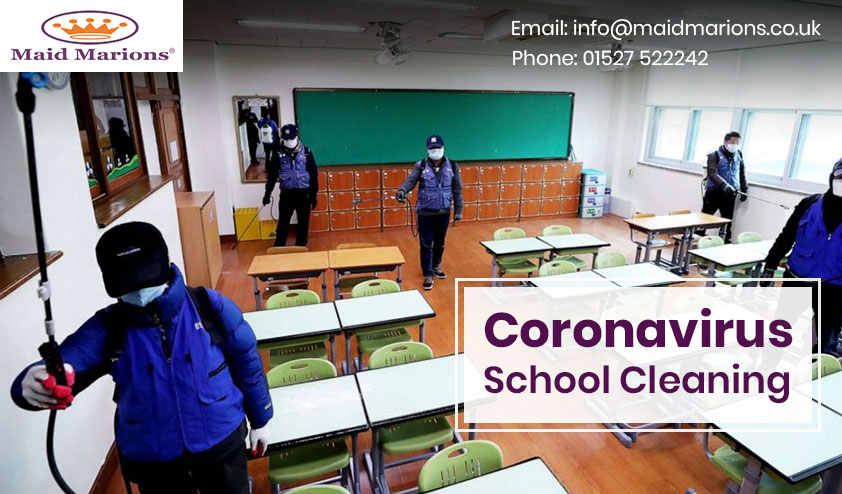Cleaning and Disinfecting Tips for Businesses Affected by Covid-19
COVID-19 has had a severe impact on both our personal and professional life. You've probably felt the pressure if you own a small business. It would help if you now incorporated tactics for keeping employees and consumers secure, rather than only supplying products or services. It's difficult, significantly, when circumstances change daily. Fortunately, there are means available to assist you in keeping your staff and customers safe so that your business may continue to prosper despite the presence of COVID-19.
A team of coronavirus office cleaning service in Birmingham, including infectious disease, occupational health, nursing, and operations team members, produced a series of free, industry-specific guidelines, resources, and webinars to assist companies to keep workers and people they serve safe from COVID-19. We'll go through some practical ways for making things less stressful on the job with the aid of these materials.
Cleaning and disinfection tips for the workplace
COVID-19 and other viruses and bacteria are distributed more slowly when high-touch surfaces and frequently used locations are disinfected. When it comes to cleaning the office, you'll want to develop a strategy that everyone can comprehend and implement. Use visual aids such as charts, checklists, and posters to ensure that everything runs smoothly. Of course, it would help if you also had the necessary cleaning supplies on hand.
The cleaning process may be divided into three stages.
Plan: Determine what needs to be cleaned during this stage. Remember that not every area demands the same level of attention. Only basic cleaning is required in places that have been unused for seven or more days. Disinfect high-touch surfaces (sinks, doorknobs, elevator buttons, etc.) regularly. You'll also need to consider the necessary resources and equipment. Consider the number and availability of your present janitorial or environmental services personnel, the kind, and availability of cleaning supplies, and the personal protective equipment (PPE) required to clean your facility.
Cleaning filthy surfaces with soap and water
before disinfecting them is a good idea. Also, make sure you're using the proper
cleaning or disinfecting chemicals.
COVID-19 can be protected with EPA-approved disinfectants. First, check the labels to be sure the items you're interested in will satisfy your needs. Then, follow the directions on the label and pay attention to all safety information and application instructions once you have everything you need. Also, remember to clean or change air filters regularly, as directed by the manufacturer.
Maintain — Keep up with regular cleaning and disinfection, and don't be hesitant to change or amend your strategy when disinfectants and personal protective equipment become available. Ensure that surfaces that are regularly touched are disinfected daily. Maintain safe procedures to offer extra layers of protection to ensure everyone's safety. Handwashing often, wearing masks, making staff stay home if they are unwell, and social distance are examples of these measures.
Retail space advice
Your cleaning regimen will be a little different because you probably have higher foot traffic in a business. Here are some ways you may take to ensure the safety of your staff and consumers.
●
High-touch places should be
cleaned and disinfected regularly (doorknobs, push bars and door handles, light
switches, carts and baskets, touchscreens, keyboards, and credit card
machines).
●
Weekly deep cleaning using
EPA-approved disinfectants that fulfill CDC guidelines for usage and efficacy
against viruses, bacteria, and airborne and bloodborne pathogens is
recommended.
●
High-traffic areas have sanitizing
wipes and hand sanitizer on hand (e.g., public and employee entrances,
restrooms, and common areas).
● Cashiers and other staff who cannot leave their workstations to wipe their hands often should be given alcohol-based hand sanitizers containing at least 60% alcohol.
How to Deal with Physical Distancing in the Workplace
COVID-19 has altered our approach to public
areas. Workplaces are no different. Keep these pointers in mind if you're still
unable to acclimatize.
★
At any given time, keep the number
of individuals in your establishment to a minimum. This may need altering
company rules to allow flexible work locations (e.g., work-from-home) and work
hours (e.g., staggered shifts).
★
Increase physical space between
employees at work (more distance between workplaces to provide a 6-foot
separation between workers, encourage employees to avoid elevators to limit the
number of passengers, establish one-way traffic flow via corridors and halls,
etc.).
★
When feasible, have meetings over
the phone or through video. If you meet in person, ensure that there is enough
distance between each employee, that everyone is wearing masks, and that the
meeting room has been thoroughly cleaned and disinfected.
★
Cancel any travels or events that
aren't necessary.
★
Break periods should be staggered
so that employees aren't all in the same place at the same time.
★
Retail areas benefit from physical
separation.
★ If it's difficult to maintain physical distance, make sure markings show six feet of separation between personnel and consumers or erect barriers.
While this has become the new normal,
management teams must be adaptable, alert, sympathetic to employee
requirements, and capable of clearly and effectively explaining workplace
changes and new regulations. All of this may assist keep things running
smoothly as you seek to safeguard your employees, clients, and yourself.


Comments
Post a Comment